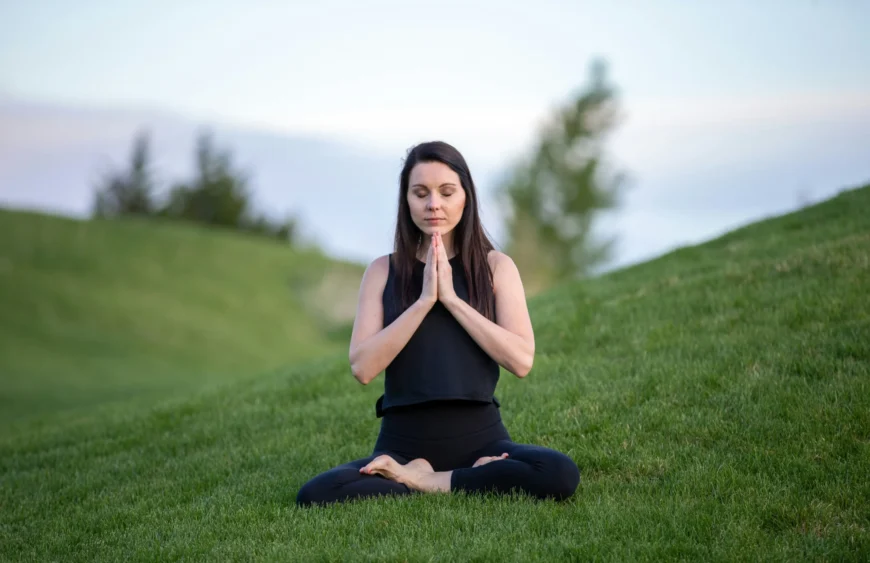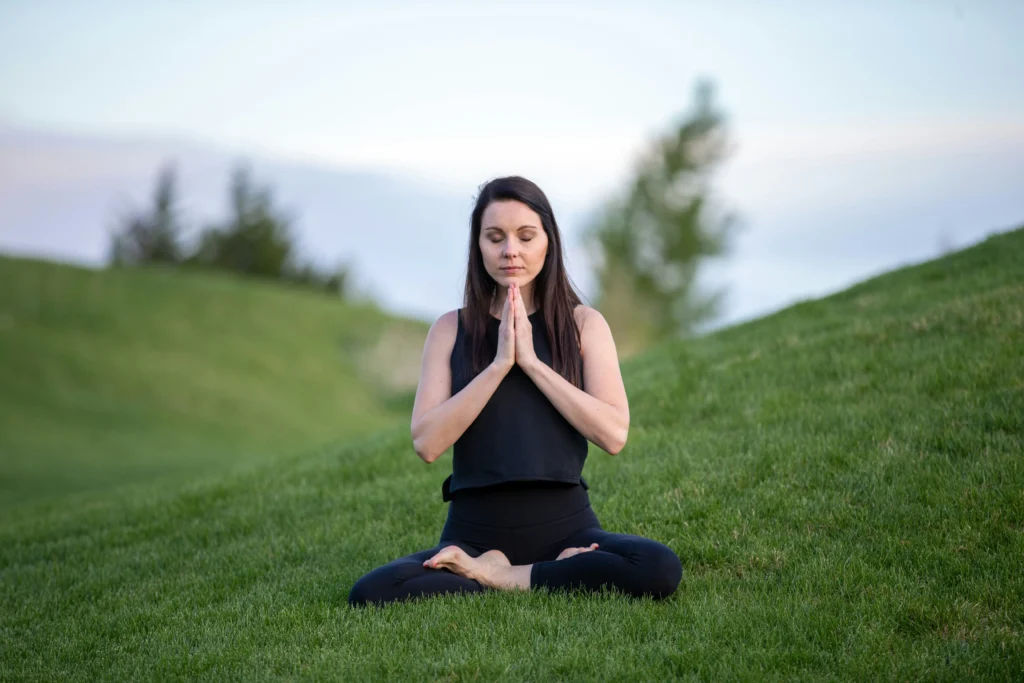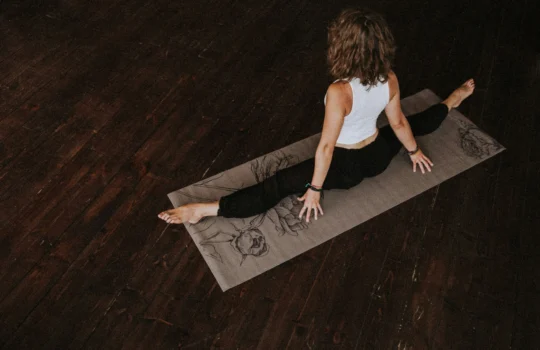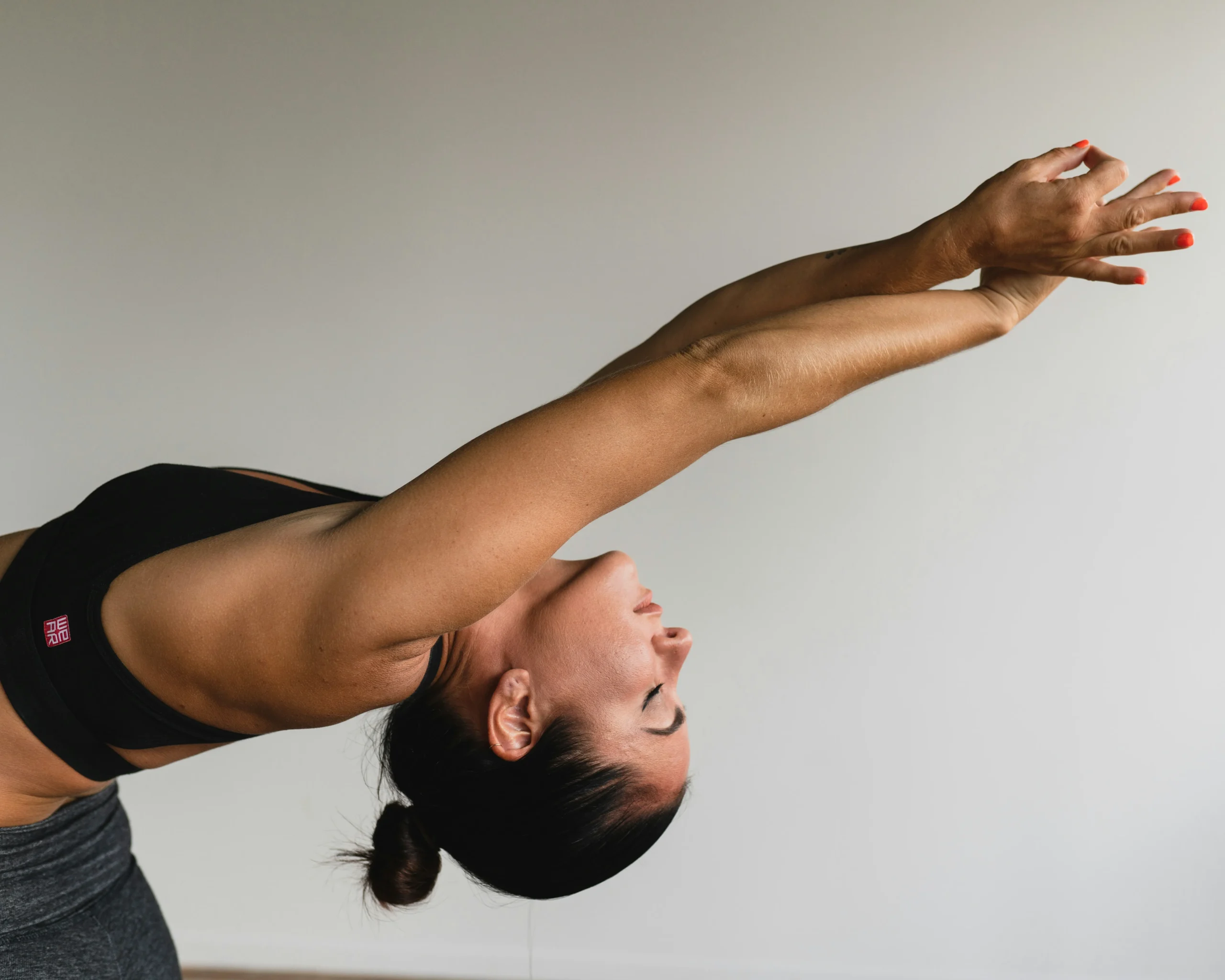What is Pranayama? The Ultimate Joy of Purifying Breath Technique for Beginners

What is Pranayama? Your Ultimate Beginner’s Guide to Yoga Breathing Exercises
Welcome to the world of Pranayama, where each breath can unlock a universe of peace, energy, and health you never knew existed!
If you’ve ever felt like your yoga practice was just scratching the surface of its potential, or if you’re searching for a natural way to reduce stress and boost your vitality, you’re about to discover your new best friend.
Pranayama, the ancient art of yoga breathing exercises, isn’t just for seasoned yogis; it’s a game-changer for everyone, including beginners like you! So, get comfy, and let’s dive into the breath of life together. Prepare to transform your mind, body, and soul—one breath at a time.
Table of Contents
What is Pranayama?
Pranayama might sound like the latest health fad, but trust us, it’s as ancient as it gets! Originating from the Sanskrit words “Prana” (life force) and “Yama” (control), Pranayama is essentially the practice of controlling the breath to influence the flow of energy in the body. This isn’t your average in-and-out breathing; it’s about mastering the breath to unlock energy, promote healing, and enhance your mental, physical, and spiritual wellbeing.
Historically, Pranayama has been a cornerstone of yoga practice, dating back thousands of years in India. It’s not just about breathing deeply; it’s about using various techniques to manipulate your breath for specific benefits, from calming the mind to energizing the body. Think of Pranayama as the secret sauce that can make your yoga practice more potent or stand alone as a powerful tool for relaxation and energy management.

The Health Benefits of Pranayama
Now, let’s talk benefits—and we’re not just blowing hot air here. Pranayama is a powerhouse of health perks for both your body and mind. Here’s a sneak peek into the treasure trove of benefits waiting for you:
- Stress Slayer: In today’s fast-paced world, stress is our constant companion. Pranayama is like your personal stress buster, using breath control to calm the mind, reduce anxiety, and promote relaxation. Say goodbye to stress and hello to serenity!
- Energizer Bunny: Feel like you’re running on empty? Pranayama can help boost your energy levels without the jitters of caffeine. Techniques like Kapalabhati (Skull Shining Breath) are perfect for that natural pick-me-up.
- Lung Power-Up: With regular practice, Pranayama can strengthen your respiratory system, increase lung capacity, and improve overall breathing efficiency. It’s like taking your lungs to the gym!
- Concentration Booster: If you find your mind wandering more than a nomad, Pranayama can help sharpen your focus and concentration. Practices like Anulom Vilom (Alternate Nostril Breathing) are great for clearing the mind and enhancing cognitive function.
- Emotional Equilibrium: Pranayama can help regulate your emotions, making it easier to manage mood swings and maintain emotional balance. It’s like emotional alchemy, transforming negative energy into positive vibes.
- Detox Delight: By enhancing your breath control, Pranayama aids in flushing out toxins from the body, promoting internal cleansing and rejuvenation. It’s like a spa day for your insides!
So, whether you’re looking to destress, boost your energy, or simply enhance your overall wellbeing, Pranayama holds the key. And the best part? All you need is your breath, a little bit of space, and an open mind. Ready to breathe your way to a healthier, happier you? Let’s get started!
Preparing for Pranayama: Setting Up Your Practice
Before you dive headfirst into Pranayama, there are a few simple steps you can take to ensure your practice is as effective (and enjoyable!) as possible. Think of this as setting the stage for a performance where you’re both the audience and the star of the show.
- Find Your Happy Place: Choose a quiet, comfortable spot where you won’t be disturbed. It could be a cozy corner of your bedroom, a peaceful spot in your garden, or anywhere you feel relaxed. The key is to find a space that feels tranquil and allows you to focus.
- Timing is Everything: While you can practice Pranayama any time of day, mornings are considered ideal. It’s a magical time when the world is waking up, and your mind is fresh. If mornings aren’t your thing, try to practice at the same time each day to build a consistent routine.
- Dress for Success: Wear comfortable, loose-fitting clothes that don’t restrict your breathing. You want to feel free and unrestricted as you explore the depths of your breath.
- Sit Comfortably: You don’t need to twist yourself into a pretzel. Simply sit in a comfortable seated position, either on the floor with a cushion or in a chair with your feet flat on the ground. The goal is to keep your spine straight and your body relaxed.
- Set an Intention: Before you start, take a moment to set an intention for your practice. It could be something as simple as seeking calmness, improving concentration, or just being present. This intention will guide your practice and help keep you focused.
Core Pranayama Techniques for Beginners
Now that you’re all set up, let’s explore some foundational Pranayama techniques that are perfect for beginners. These practices are the building blocks of Pranayama and will introduce you to the art of breath control in a gentle, accessible way.
- Anulom Vilom (Alternate Nostril Breathing)
- Sit comfortably with your spine straight and shoulders relaxed.
- Place your right thumb over your right nostril and inhale deeply through your left nostril.
- At the peak of your inhalation, close off the left nostril with your ring finger, then exhale through the right nostril.
- Continue this pattern, alternating nostrils after each inhalation. Aim for 5 to 10 cycles to start.
- Kapalabhati (Skull Shining Breath)
- Sit in a comfortable position with your hands on your knees, palms up.
- Take a deep breath in, then exhale forcefully through your nose, pulling your stomach in towards your spine.
- Let your inhalation be passive, with the focus on the forceful exhalation.
- Start with 2 to 3 rounds of 20 breaths, gradually increasing as you become more comfortable.
- Bhramari (Bee Breath)
- Sit comfortably, closing your eyes and relaxing your face.
- Place your index fingers on your ears, gently closing them.
- Inhale deeply, then, keeping your mouth closed, make a humming sound like a bee as you exhale.
- Repeat 5 times, feeling the vibration resonate in your head.
- Ujjayi (Ocean Breath)
- Sit or stand with your spine straight.
- Inhale deeply through your nose, then exhale slowly through your nose while constricting your throat to create a soft ocean sound.
- Keep your mouth closed throughout the practice. Aim for 5 to 10 cycles.
These practices are just the beginning, but they offer a solid foundation for your Pranayama journey. Remember, the key to Pranayama is patience and persistence. Start slowly, listen to your body, and gradually increase the duration and complexity of your practice as you become more comfortable. Happy breathing!
Integrating Pranayama into Your Daily Routine
Making Pranayama a part of your daily life doesn’t require turning your schedule upside down; instead, it’s about finding moments throughout your day that can be enhanced by a deeper connection to your breath. Here’s how to weave the magic of Pranayama into the fabric of your daily activities:
- Morning Momentum: Start your day with a few minutes of Pranayama to awaken your body, clear your mind, and set a positive tone for the day ahead. Even 5 minutes of Anulom Vilom or Kapalabhati can make a big difference.
- Desk Detox: If you find yourself slumped over your desk, take a few moments to sit up straight and engage in some Ujjayi breaths. It’s a fantastic way to oxygenate your brain, shake off lethargy, and refocus your energy.
- Stress SOS: Feeling overwhelmed or anxious? Pranayama can be your emergency stress-relief tool. A quick session of Bhramari (Bee Breath) is incredibly calming and can help you regain your equilibrium.
- Evening Wind Down: Before you dive into your evening activities or head to bed, spend some time in Pranayama to help your body transition into relaxation mode. It’s a beautiful way to release the stresses of the day and prepare for restful sleep.
- Incorporate with Other Activities: Pranayama can complement other forms of exercise, meditation, or even tasks like cooking and gardening. The key is to be mindful of your breath and use it to enhance your focus and presence in any activity.
Overcoming Common Challenges in Pranayama Practice
As with any new practice, you might encounter a few bumps along the way. Here are some common challenges and tips for overcoming them:
- Difficulty Concentrating: It’s normal for your mind to wander at first. Try to gently bring your focus back to your breath without getting frustrated. With time, your concentration will improve.
- Physical Discomfort: If you experience discomfort during a particular breathing technique, ease off a bit. You might be pushing too hard. Pranayama should be gentle and soothing. Make sure you’re sitting comfortably and not straining any part of your body.
- Lack of Time: Feeling too busy for Pranayama? Start with just a few minutes a day. Even short sessions can have significant benefits, and as you begin to feel those benefits, you may naturally find yourself making more time for practice.
- Impatience or Discouragement: Progress in Pranayama, as with any practice, can take time. Celebrate small victories and be patient with yourself. Remember, the journey is as important as the destination.
- Breathing Irregularities: Some people might find certain breathing patterns challenging. If you have any respiratory issues or health concerns, consult with a healthcare provider or a qualified yoga instructor for personalized advice and modifications.
The Spiritual Side of Pranayama
Pranayama is not just a physical or mental practice; it’s a deeply spiritual one. By controlling the breath, we gain access to the subtle energies within, fostering a connection to our higher self and the universe. This spiritual dimension of Pranayama can lead to profound transformations in how we perceive ourselves and the world around us.
- Gateway to Meditation: Pranayama is often considered a preparatory stage for deeper meditation practices. By calming the mind and stabilizing the body through breath control, we create an ideal state for meditation, making it easier to dive into deeper states of awareness.
- Enhancing Self-Awareness: Regular Pranayama practice increases our awareness of the present moment and our internal states. This heightened self-awareness can lead to greater empathy, compassion, and understanding, both towards ourselves and others.
- Connecting with the Universal Life Force: Prana, or life force, is omnipresent. Through Pranayama, we learn to harness and harmonize with this universal energy, fostering a sense of connectedness with all living beings and the natural world.
- Path to Inner Peace: As we deepen our Pranayama practice, we begin to experience a profound sense of inner peace and contentment. This spiritual calmness can help us navigate life’s challenges with grace and equanimity.
Conclusion
Pranayama is more than just breathing exercises; it’s a holistic practice that nurtures the body, mind, and spirit. For beginners, stepping into the world of Pranayama can seem daunting, but as we’ve seen, starting with the basics and gradually incorporating these practices into your daily life can lead to significant benefits. From enhanced physical health and mental clarity to emotional balance and spiritual growth, Pranayama offers a path to a more fulfilling and balanced life.
Ready for a transformative journey?
Are you ready to embark on a transformative journey with Pranayama? Start small, be consistent, and remember, the journey of a thousand miles begins with a single breath. We invite you to share your experiences, questions, or insights about Pranayama in the comments below. Whether you’re just beginning or have been practicing for a while, we’d love to hear about your journey and support you along the way.
Subscribe to our newsletter for more guides, tips, and insights into the wonderful world of yoga and wellness. Let’s breathe our way to a healthier, happier, and more harmonious life together!
Let’s explore the yoga deeper and visit other blogs that you’re interested in:
- 10 Amazing Yoga Exercises for The Eyes That Can Sharpen Your Vision
- Why Eco-Friendly Yoga? Practices and Products for a Sustainable Lifestyle You Need Now
- 5 Critical Reasons Why Children Need to Learn Yoga and Meditate
Go to home page for other amazing content to enlighten you about yoga, mindfulness and meditation.






